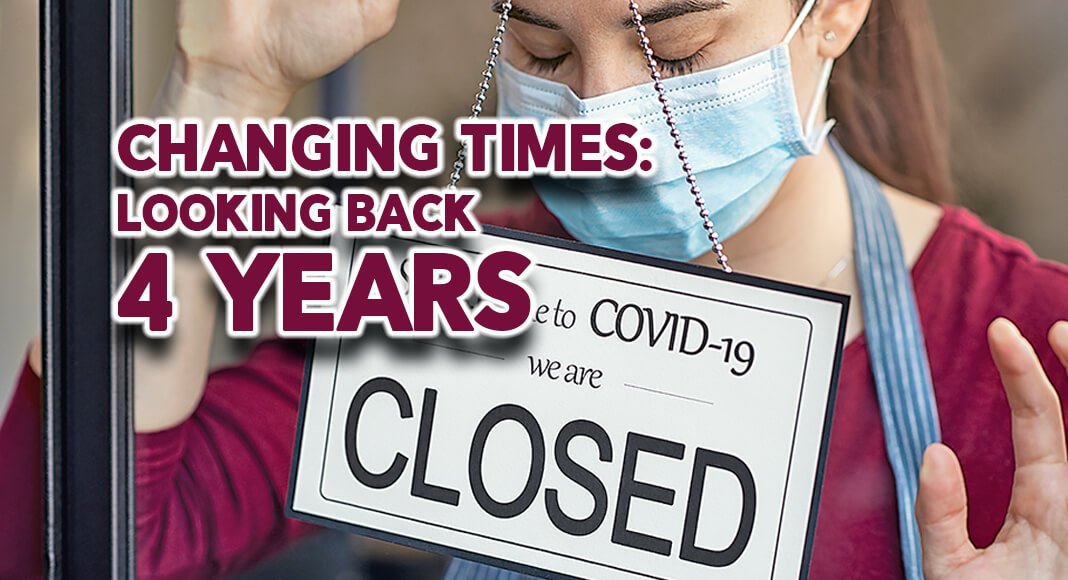
Texas Border Business
Unlike most weeks in my frenetic schedule of projects, deadlines, speeches, and meetings, I remember that one well – Monday speech in Lubbock; flight to Dallas for afternoon meeting; all-day testimony in Dallas on Tuesday; Wednesday meeting in DC; Longview speech on Thursday; late afternoon flight for reception at our home. That was a pretty typical week, but it was followed by a year of being almost constantly at home with virtual work and all of the analysis, task forces, and other factors which accompany game-changing events. It was quite an adjustment from normally being on the road 250-300 days per year.
Four years ago, the COVID-19 pandemic reached the US, causing tragic consequences for life, health, and financial security. Millions lost jobs or had to work reduced hours. Between February and April 2020, the total number of Texas workers dropped by nearly 1.5 million (10%+). Initial unemployment claims rose from 13,500 per week to well over 300,000.
Businesses dealt with closures, capacity limits, and additional expenses to enable safe operations. Supply chains were disrupted, causing yet more issues. Some industries struggled to survive. The sharp decline in demand caused oil prices to plunge, and drilling was stymied. No one escaped the chaos.
A year later, 835,500 Texas jobs had been regained, with a return to February 2020 levels in 18 months. The rebound and expansion in Texas has been impressive, and the state continues to make progress.
For comparison, it required 26 months for US employment to attain prior numbers. The dislocations emanating from shutdowns, supply chain problems, and high inflation emerging from the massive (but largely necessary) stimulus programs took their toll. Job growth has been concentrated, with Texas comprising about 20% of the national gain (1.1 million) and Florida another 15%. California, with the largest total employment, has gained fewer than 350,000. New York and several other states are not yet back to pre-pandemic levels.
Some patterns will never return, and others will require decades to repair. Educational losses are proving difficult to restore. Many young people saw career plans derailed and face ongoing challenges. Worker priorities shifted, with many remaining at least partially remote, and real estate markets were fundamentally altered. Physical and mental health issues are extracting a human toll. All of these factors affect productivity and future potential.
On the positive side, the US has shown remarkable resilience despite multiple headwinds, major issues have been resolved, biosciences have emerged as a major source of expansion and investment, and equity markets have soared to new heights. As with any disruption of such magnitude, the pandemic wrought enduring changes in many aspects of the economy (and life). Looking back over four years, the progress has been remarkable. Stay safe!
_____________________
Dr. M. Ray Perryman is President and Chief Executive Officer of The Perryman Group (www.perrymangroup.com), which has served the needs of over 3,000 clients over the past four decades.















